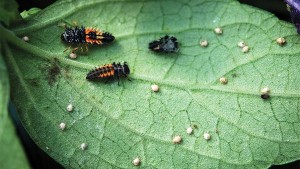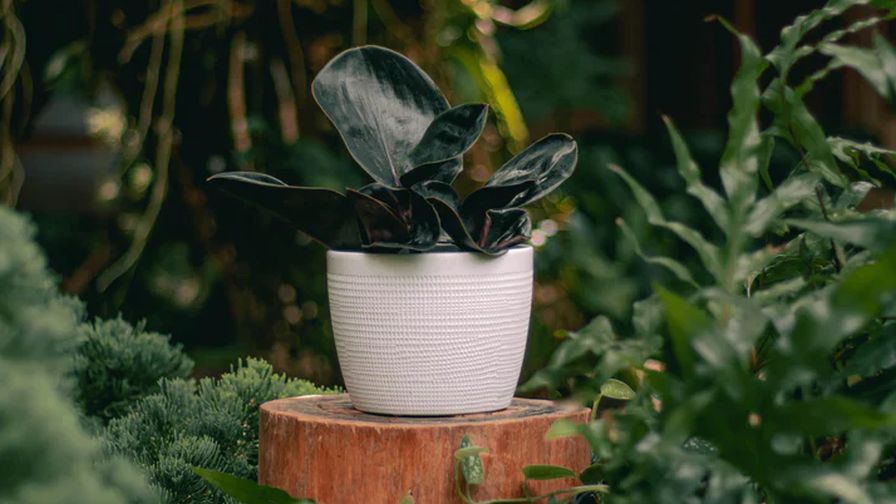4 Things You Need To Know About Implementing Biological Controls

Parasitized aphid mummies left behind by Ladybird beetle larvae, voracious beneficial predators that can consume several aphids per day.
Photo courtesy of John Speaker, Speaker’s Gardens
Grower interest in biological control agents (BCAs) continues to increase. The initial transition to BCAs requires commitment and a bit of learning with solid support from an informed supplier. While this can feel like a hurdle to some, there is more and better information available to assist growers than ever before. Here are four ideas for successfully getting started with biocontrols at your greenhouse.
1. Start Small
If you’re on the fence when it comes to BCAs, consider starting small. Really small! Nematodes are a great entry point into biocontrols. They provide tried-and-true control for fungus gnats, as well as effectively reducing thrips populations by attacking soil-borne pupal stages. Nematodes are also compatible with most traditional pesticide programs, which further helps to ease the transition.
2. Know Which Pesticides Pair Well With BCAs
Your supplier can offer details regarding pesticides that are compatible with one or more BCAs. With careful guidance, you may be able to use certain pesticides to keep pests below damaging thresholds without hurting your biocontrol program.
3. Take It One Greenhouse At A Time
This approach gives you a chance to step into this new endeavor with less risk. A house full of vegetables and herbs would be a prime candidate since there are fewer effective pesticides labeled for edible crops in greenhouses. Build on your success and expand into the rest of the range as your confidence grows.
4. Enlist Your Supplier’s Help
Work together to review your pesticide application records for the previous three months to determine if any may interfere with starting your program. A transition period to “softer,” shorter-residual pesticides may be necessary before you can safely introduce BCAs. From here, you’ll be on your way to success with BCAs.
Biocontrols Checklist
Before implementing a biocontrols program at your greenhouse, use this checklist to make sure you are prepared to use them successfully.
1. Do I understand pest and biological control agent (BCA) life cycles? Understanding the biology of insect and mite pests is crucial for all types of pest control programs.
2. Have I reduced incoming pest pressure? Segregate incoming shipments for careful scouting and treat with BCA-friendly pesticides if needed.
3. Do I practice strong sanitation? Sanitation is crucial. Weeds and “pet plants” can undermine a biocontrol program by providing safe haven for insects and mites.
4. Have I scheduled my BCA orders in advance? Unlike pesticides, BCAs are alive. You cannot warehouse them to anticipate your needs. Forecasting becomes easier as you gain experience.
5. Do I practice vigilant scouting using sticky cards and plant inspections? Remember to track pests and beneficial organisms. Early detection of pests is critical because few BCAs are capable of controlling high pest populations.
6. Do I understand chemical compatibility? Know which pesticides are compatible with the BCAs that you intend to use before you release them. Quick action may be necessary to save a biocontrol program, so it is important to be prepared in advance.
7. Do I have the full support of my growing team? Everyone involved in the production of the crops needs to be on board with using BCAs, including managers and ownership. Biocontrol is a team sport.
8. Do I have realistic expectations? BCAs can be very effective, but they are not a simple solution. Learning requires commitment and some trial and error. (How did your first crop of poinsettias turn out?) Failures are not permanent. Clean it up and try again.









